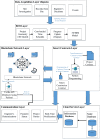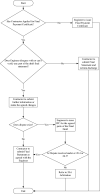A framework for smart construction contracts using BIM and blockchain
- PMID: 37353520
- PMCID: PMC10290088
- DOI: 10.1038/s41598-023-37353-0
A framework for smart construction contracts using BIM and blockchain
Abstract
Poor payment practices are perceived as one of the biggest challenges facing the construction industry. Since payments are issued according to project contract terms, the project's cash flow is inherently affected by the contract and how parties fulfill their obligations. This research proposes a framework for payment automation in construction projects to achieve smart construction contracts. Payments are automatically issued upon satisfying contract conditions using blockchain. Cryptocurrency is proposed to be utilized in the framework to execute the contract terms with no need for a third party to process project payments. 5D BIM is used to model the geometry of buildings and visualize project progress together with payment status using Autodesk Revit, Navisworks, and Primavera P6. The developed framework has the potential to reduce the consequences of poor payments. An actual case study for a construction project in Cairo, Egypt is worked out to demonstrate the main features of the proposed framework. The results of the case study reveal that project cash flow is secured and payments are instantly issued. Moreover, electronic records of payments are kept on the blockchain.
© 2023. The Author(s).
Conflict of interest statement
The authors declare no competing interests.
Figures











References
-
- Rhodes C. Construction industry: Statistics and policy. J. Phys.: Conf. Ser. 2019;2019(01432):1–16.
-
- Newswire, P. Global Construction Outlook 2022 [Internet] (2018; accessed 3 Oct 2021). https://www.reportlinker.com/p02678488/Global-Construction-Outlook.html.
-
- Cardeira, H. Smart contracts and possible applications to the construction industry. In Proc New Perspect Constr Law Conf (2015).
-
- Wang J, Wu P, Wang X, Shou W. The outlook of blockchain technology for construction engineering management. Front. Eng. Manag. 2017;4(1):67. doi: 10.15302/J-FEM-2017006. - DOI
-
- Li J, Greenwood D, Kassem M. Blockchain in the built environment and construction industry: A systematic review, conceptual models and practical use cases. Autom. Constr. 2019;102:288–307. doi: 10.1016/j.autcon.2019.02.005. - DOI
MeSH terms
LinkOut - more resources
Full Text Sources
Research Materials

